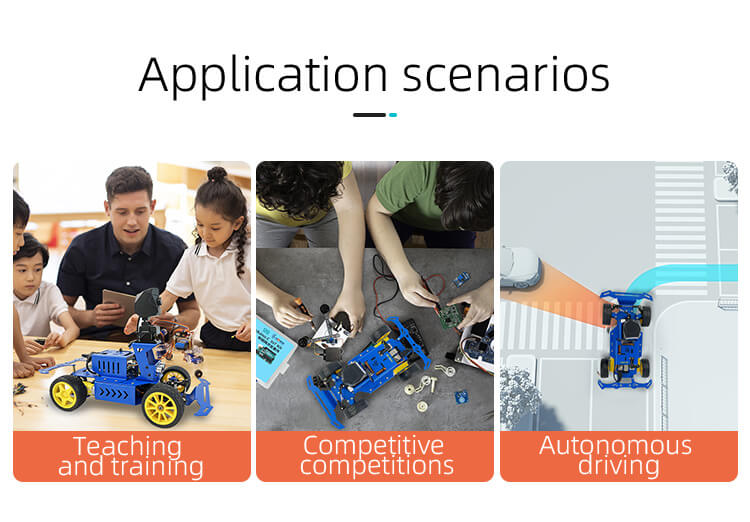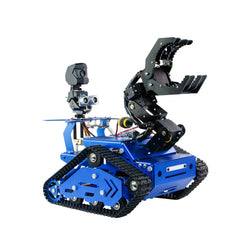As a manufacturer that specializes in the development of educational robots, I often see novices asking on forums: "How to make robots" and "How to learn robot-related knowledge"? For newbies, if you don't know where to start and want to learn about robotics - this article is for you - in it I will try to explain the process and tell you what to do in the first step.
About XiaoR GEEK
We were established in 2014 as a company specializing in the development of educational robots, with a R&D team of nearly 20 people. From the original one person working alone to the current team of nearly 40 people, one can imagine the hardships involved.
From the picture below, you can see that our products are becoming more and more mature. So far, we have obtained 3 inventions, 41 utility model patents, 40 appearance patents and 28 software works.
This company was originally founded because our founder Liu Hui has been passionate about electronic products since he was a child. He likes to disassemble electronic appliances and is very interested in the wiring modules, which made him choose it without hesitation in college. Information engineering major also laid a solid foundation for his future creation of XiaoR GEEK.
So for novices who want to learn robots, you must first understand what robots are?
The robot mainly consists of the following parts:
Mechanical structure: This is the skeleton of the robot, used for support and movement. It usually includes components such as frames, joints, drives, and connectors, and the design depends on the function and application of the robot.
Sensor: The sensor is a key component for the robot to sense the external environment. Common sensors include cameras, sound sensors, touch sensors, distance sensors, accelerometers and gyroscopes, etc., which help robots obtain and process external information.
Control system: The control system is the "brain" of the robot, responsible for receiving sensor data and making corresponding decisions. It usually consists of a main controller or microcontroller that can be programmed to implement various functions and behaviors.
Actuator: The actuator is the component of the robot that performs physical actions, such as the robot's arms, legs and other moving parts.
Power System: The robot requires a power system to provide the required power.
Software programming: The functions and behaviors of the robot are realized through software programming. Programming languages and development environments can vary depending on the type and complexity of the robot, such as C++, Python, ROS (Robot Operating System), etc.
In addition, some advanced robots may be equipped with a Robot Operating System (ROS), which is an open source operating system that provides a series of underlying services for robots, such as hardware abstraction layer, control system, sensor data processing, communication, Package management, etc.
For novices, after understanding the structure of the robot, where should they start?
So first you need to understand your own needs:
what do you want? Do you want to create all parts of the robot from scratch, or do you want to use a pre-made robot and just write the software parts?
There are many ready-made solutions for mechanical and electrical components that are quite affordable and can be found on platforms like Amazon or AliExpress. There are also fully assembled robots that just require you to write your own software to implement them.
If you are a novice, I recommend buying a robot that can be assembled (i.e., in parts, and you can install it yourself with the accompanying assembly video after purchase. In the process, you can also become familiar with the parts of the robot and its functions). Of course, if you have plenty of time, you can choose the parts you want and create them by yourself. However, the process of purchasing components is complicated. You may need to choose the model parts you need in multiple stores, and then compare prices from multiple parties, which is often time consuming. Just wasted.
The next thing to decide is what function do you want your robot to achieve? How does it travel? Is it a walking robot, wheeled robot, robotic arm, etc.? You can roughly determine the basic functions of the robot, and if you want to add new functions later, you can continue to add them. In the initial stage, it is enough to be able to drive the robot to move or control the robot to rotate.
Okay, finally when your robot is successfully built, you need to program it. You can use C++, Python, Arduino C, etc. This is mainly aimed at people with certain programming skills. Of course, for beginners, even It doesn’t matter if you don’t have a programming foundation. Many robots have Scrath3.0 graphical programming. Even if you have no programming foundation, you can program your robot immediately.
The first step in learning robots should never be limited to just talking on paper. When you take the first step, you will not be far away from mastering this skill. Many people in the early stage are afraid of difficulties and often shrink from the first step. Faced with complicated parts, they feel that they have nowhere to start. This is why we appear. Our existence is to create simple and convenient learning tools for more robot enthusiasts, reducing a lot of trivial and unnecessary time, so that beginners can bravely take the first step.




